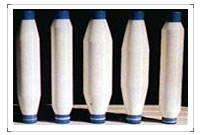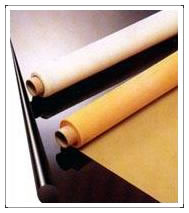|
|
| what you need is what we should do! |
| Products |
|
Polyester Screen Printing
Polyester Screen Printing are one of the most advanced high-tech fabric products in 1990s for screen printing.
With imported high quality material,We produces superior quality polyester and polyamide bolting cloth for screen printing. We also have the most advanced testing instruments and technicians well trained by Swiss experts to guarantee a reliable quality.
|
 |
 |
General Specification of Polyester Mesh: We provide polyester mesh for screen printing with a mesh variety of 60mesh/ inch,80mesh/ inch, 100mesh/ inch,110mesh/ inch,120mesh/ inch,135mesh/ inch,160mesh/ inch,180mesh/ inch,200mesh/ inch,230mesh/ inch,250mesh/ inch,280mesh/ inch,305mesh/ inch,355mesh/ inch,380mesh/ inch,420mesh/ inch.
Width of polyester printing mesh:
Max. width: 3200mm.
We may also take orders to produce polyester fiber mesh with other special requirements. |
|
| Detail Specification of Polyester Printing Mesh |
| model |
mesh
count |
APERTURE |
THREAD
DIAMETER |
OPENING |
thickness |
INK THROUGH VOLUME
THEORETICALLY |
| mesh/cm |
micron |
micron |
% |
micron |
cM3/m2 |
| 24-100 |
60 |
316 |
100 |
57 |
136-145 |
64.4 |
| 32-100 |
80 |
212 |
100 |
46 |
145-155 |
69 |
| 39-55 |
100 |
195 |
55 |
56 |
88-96 |
55.0 |
| 43-80 |
110 |
147 |
80 |
40.8 |
7-132 |
53 |
| 47-55 |
0 |
152 |
55 |
51 |
88-96 |
47.6 |
| 48-70 |
0 |
135 |
70 |
41 |
108-120 |
45.5 |
| 54-55 |
135 |
8 |
55 |
47 |
88-96 |
44.5 |
| 54-64 |
135 |
115 |
64 |
38.5 |
95-105 |
38.9 |
| 54-70 |
135 |
108 |
70 |
34 |
108-120 |
40 |
| 64-45 |
160 |
105 |
48 |
43 |
73-82 |
36.5 |
| 64-55 |
160 |
98 |
55 |
38 |
85-95 |
36.1 |
| 64-64 |
160 |
88 |
64 |
30 |
95-105 |
30.7 |
| 72-45 |
180 |
92 |
45 |
40 |
68-76 |
33.1 |
| 72-48 |
180 |
90 |
48 |
36 |
75-84 |
33.1 |
| 72-55 |
180 |
81 |
55 |
30 |
88-97 |
26.6 |
| 80-45 |
200 |
75 |
45 |
36 |
65-74 |
27.7 |
| 80-48 |
200 |
72 |
48 |
33 |
75-84 |
28.7 |
| 90-48 |
230 |
56 |
48 |
25 |
77-85 |
23.5 |
| 100-40 |
250 |
58 |
40 |
33 |
62-71 |
21.3 |
| 110-40 |
280 |
48 |
40 |
27 |
65-71 |
18.4 |
| 110-34 |
280 |
54 |
34 |
35.5 |
52-57 |
20.2 |
| 0-34 |
305 |
45 |
34 |
30.5 |
52-57 |
18.4 |
| 140-34 |
355 |
31 |
34 |
19.5 |
56-62 |
14.4 |
| 150-31 |
380 |
36 |
31 |
29 |
43-47 |
13.1 |
| 150-34 |
380 |
30 |
34 |
20.5 |
56-62 |
14.9 |
| 165-31 |
420 |
31 |
31 |
23 |
52-58 |
12.88 |
| History and Characteristics of Polyester printing Screen |
Polyester was introduced to the screen printing market over 40 years ago and quickly replaced traditional silk as the fabric of choice among screen printers all over the world. It is a material that is uniquely suitable for screen printing because of its tensile strength, elastic memory and resistance to chemicals, abrasion heat and moisture.
There are 3 types of polyester fabrics used in screen printing and they are monofilament, low-elongation monofilament and multifilament. Most of today's screen printers use monofilament polyester, but the traditional type is rapidly being replaced with "Low-Elongation" fabric, which brings many new benefits to the screen printing process. Here we mainly introduce low-elongation monofilament polyester fabric as this is what we are producing now.
Monofilament Polyester is woven from yarn that is extruded from heated polyester into a single strand. The extruded thread is the spun to a precise diameter. Conventional monofilament polyester screen fabric will elongate under tension: the higher the tension level, the more the thread can stretch. At excessive tension levels, the thread reaches its "plastic deformation" point, and the screen will no longer hold tension.
Monofilament polyester is still suitable for non-critical printing applications. In recent years, however, it has been eclipsed by a new development in thread technology: Low-Elongation Polyester.
Low-Elongation Polyester is what we are producing now in a wide range of mesh counts, and our products offers significant advantages over the traditional monofilament polyester:
- Faster tensioning without damage to the threads
- Improved fabric strength
- Faster tension stabilization
- Higher tension threshold and breaking point
- Less tension loss during the stretching process
- Faster turnaround time from the screen room to the pressroom
- Improved registration due to stable tension
- Faster Print speeds
|
|
|




